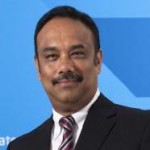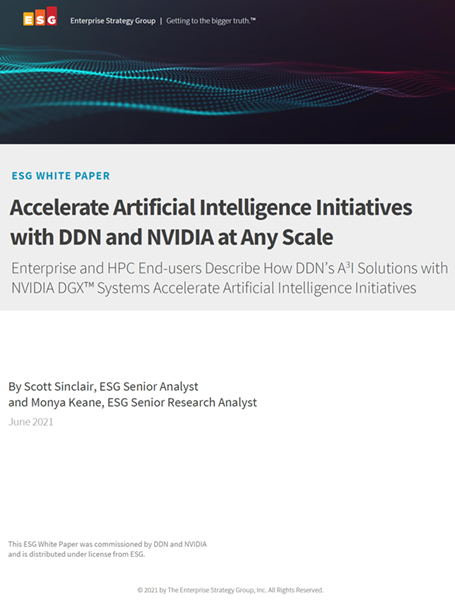Intel’s Datacenter Group has been making some interesting personnel moves of late as the company looks to the next generation of HPC systems. We caught up with Raj Hazra and Charlie Wuischpard to learn more.
insideHPC: Raj, it seems like the last couple of years Intel has been putting more focus into HPC with technology investments and acquisitions like Truescale InfiniBand from Qlogic, the Aries interconnect from Cray, and the Whamcloud team with their Lustre file system expertise. Now you’ve brought in new leadership with Charlie Wuischpard as VP of the Business Unit, does this signal a change in strategy on the business side of HPC at Intel?
 Raj Hazra: The nutshell is that we’ve grown the business in technical computing from just workstations quite well over the last several years. And that was on the back of great partnerships with the world outside — the software community, end users, and also leadership technology and products from Intel. So as we look at the business going forward, we are paying attention to some long-term trends and inflection points on the technology side. Thanks to Moore’s Law, the role of integration is fundamentally changing system architectures and the co-design of hardware and software.
Raj Hazra: The nutshell is that we’ve grown the business in technical computing from just workstations quite well over the last several years. And that was on the back of great partnerships with the world outside — the software community, end users, and also leadership technology and products from Intel. So as we look at the business going forward, we are paying attention to some long-term trends and inflection points on the technology side. Thanks to Moore’s Law, the role of integration is fundamentally changing system architectures and the co-design of hardware and software.
On the industry side, we’re seeing things morph in interesting directions, sometimes in response to technology, and sometimes not so directly. And so Intel is asking the question, “What should we be in the next phase of our business?” When you look at all of that, of course you still have to run the business and generate the growth. We publicly said that that the Datacenter Group would grow at about 15 percent CAGR, of which technical computing is a very significant portion.
So that means you have to do two things at the same time:
- Drive the aircraft carrier as exquisitely, efficiently, and as fast as possible.
- Do that while turning it towards new tracks that will lead you to the next destination.
So I brought Charlie on because my philosophy is to put people that are better than me on things that are critical to the mission at hand. That is, Charlie’s focus is to run the ship hard, fast, lean and get it ready as it goes through that turn. And my job then is to work with the larger Intel organization at the strategy office up to the exec office in laying track for that new direction. And so together I think we’ve got a very good partnership to lead what has really become one of the strongest teams in HPC going forward.
Charlie Wuischpard: So just to add to that, it really comes down to me running the P&L and all the resources from Workstations to Exascale, including this burgeoning idea of running HPC workflows in the Cloud. So it’s that whole continuum of how workloads are being executed.
insideHPC: You were out in front doing that at Penguin Computing with their POD offering for several years. Is that what brought you to Intel?
So people keep asking me: Why leave Penguin? It was a good gig. We were growing and profitable. It is a private company, so we didn’t have a lot of visibility in that sense. But when Raj called, there was all this huge change underway in the industry, and Intel is at the center of it. It’s just a much bigger stage to play in Technical Computing and the ability to have an impact is just that much greater.
And then if you look at our investments in storage, in fabrics, and the Xeon Phi product line, it adds up to great opportunities. These things are still in the early-stage with lots of engineering work being done. So taking those products to market appeals to my entrepreneurial mindset. It’s a little more “start them up and go at it” versus “running the big aircraft carrier.”
insideHPC: I’m glad you brought that up because if you look at Intel’s current lion’s share of the TOP500, there is really nowhere left to grow. It would seem to me that the future systems will need the processing, fabrics, and memory to be engineered together if you want to achieve the required performance scaling.
Charlie Wuischpard: When you look at the trajectory of people’s workload requirements versus the roadmap of processor improvement, it’s like they even want more. Even a more logarithmic scale than it has been tracking. So the things we’ve been investing in have been centered around how to meet that need through integration and new styles of computing. Parallelization has been around for a long time, but you need to continue to drive it forward if we are to reach those levels of performance.
Raj Hazra: I think the one thing that separates our approach from big established players or some of the innovative fast-moving startups is the fact that we take an ecosystem view of this. It is not that hard to make a chip with fantastic XYZ performance characteristics. But to do that with the thought in mind of how it impacts an entire ecosystem is the difference. What tools will they need? In what timeframes or in what business models will they accept or help you make this happen? That’s really what’s been behind our success over the last several decades of the x86 ecosystem. And that’s how we intend to reach not just Exascale, but affordable and usable Exascale. Because it does little good to build just one Exascale system and just have one user who is able buy it and program it.
So it’s really about this democratization of increasing scales of technical compute that were moving into the ecosystem and the industry. And that’s what makes us get up and run to work every day.
insideHPC: I’d like to shift gears and discuss some of the rumblings I’m hearing about troubles with the MIC architecture and related layoffs. This seems odd because you have what looks to be a very successful product with the Xeon Phi. You have to feel pretty good about a first-generation product that is powering the Tianhe supercomputer at #1 on the TOP500 as well as Stampede and other major supercomputers.
Raj Hazra: Let’s just get this out of the way. There is no change in our plans for the MIC architecture and we are going full steam ahead.
What I would say about such rumors is that we have a fundamental belief that parallelism and many core is the next frontier. We’ve invested in it. We continue to invest in it. And we are aggressively driving both our internal investments in engineering and ecosystem strategies to leverage that manycore capability sooner rather than later. So from our perspective, there has absolutely never been a desire to change direction. If anything, the success of Knights Corner, particularly in the sense of validating the basic value propositions of the programming model, is the right path forward to successive generations of MIC. And Charlie can tell you about the same things he has been hearing from his initial visits from customers. This has simply strengthened our resolve.
So we are charging forward with the next generation of MIC and we hope to see it in some really large accounts soon.
Charlie Wuischpard: I wish I knew where all these rumors were coming from because one wants to understand-why all the hubbub all of sudden? And part of me thinks that there must be some awfully big procurements on the way and maybe the competition is trying to throw FUD in at the last minute and cause problems.
You know, I don’t think it would have been nearly as appealing for me to come here if it was just the Xeon roadmap until the end of time. You wouldn’t need my skills for that. Coming from a small company that wanted to talk a lot just to get visibility, part of me wishes that Intel would be more forthcoming with the overall technology roadmap, but I understand that there’s so much good in there that it has to be released over time. I mean, I’m floored by the roadmap. And part the reason I came here is that I’ve never met smarter people under one roof. Raj has gathered a kind of “who’s who” in technical computing, and Intel has some of the very best architects and designers.
What really appeals to me is that building something like a Xeon Phi is really like building a space shuttle. It’s that complex, maybe more, with huge capital requirements. So Raj offered me a big budget to go forth and conquer with. How exciting is that? I find it interesting that it’s this particular point in time that these rumors are coming up that put disparate data points together into a story designed to distract the market.
Sign up for our insideHPC Newsletter.





